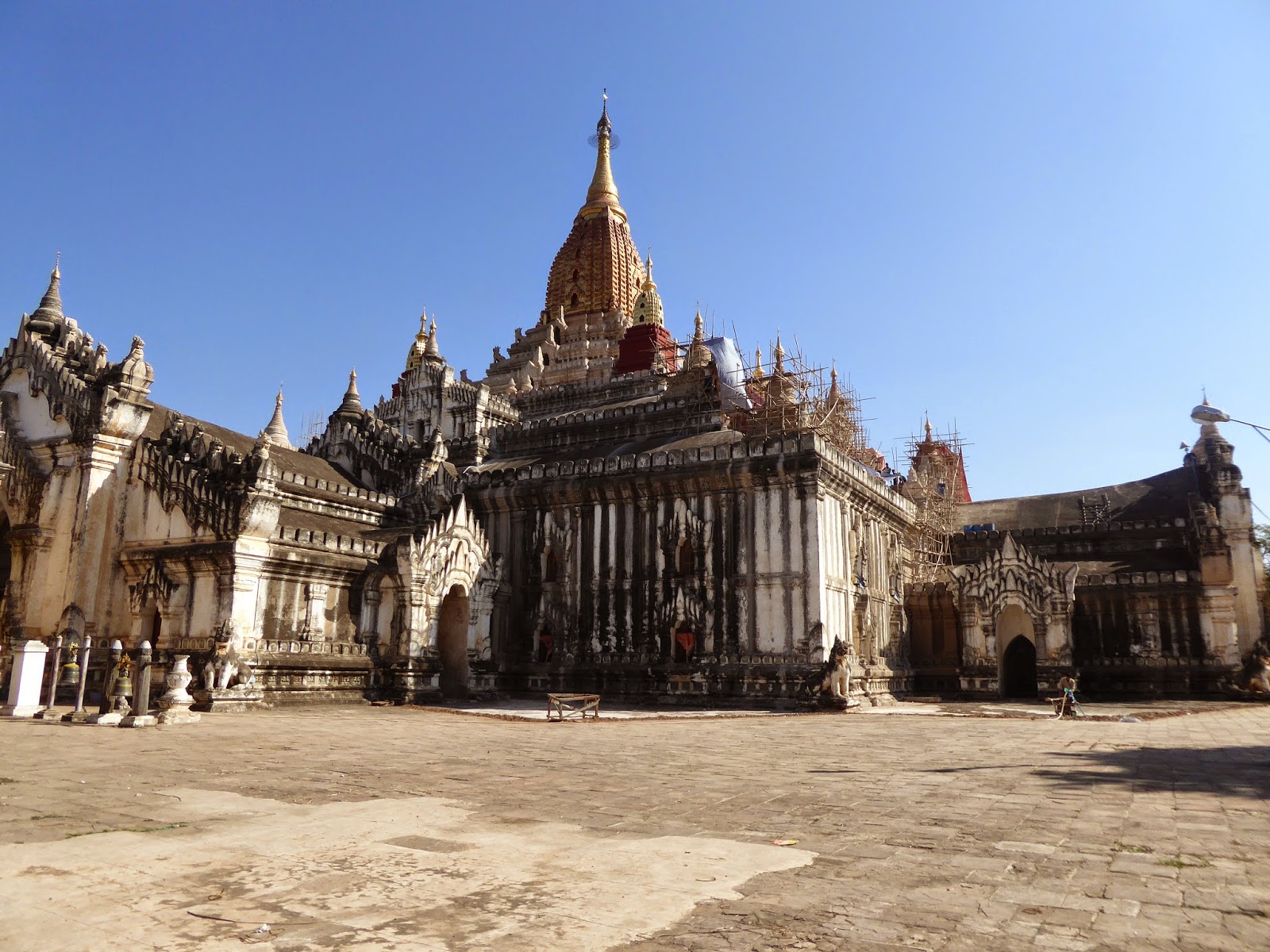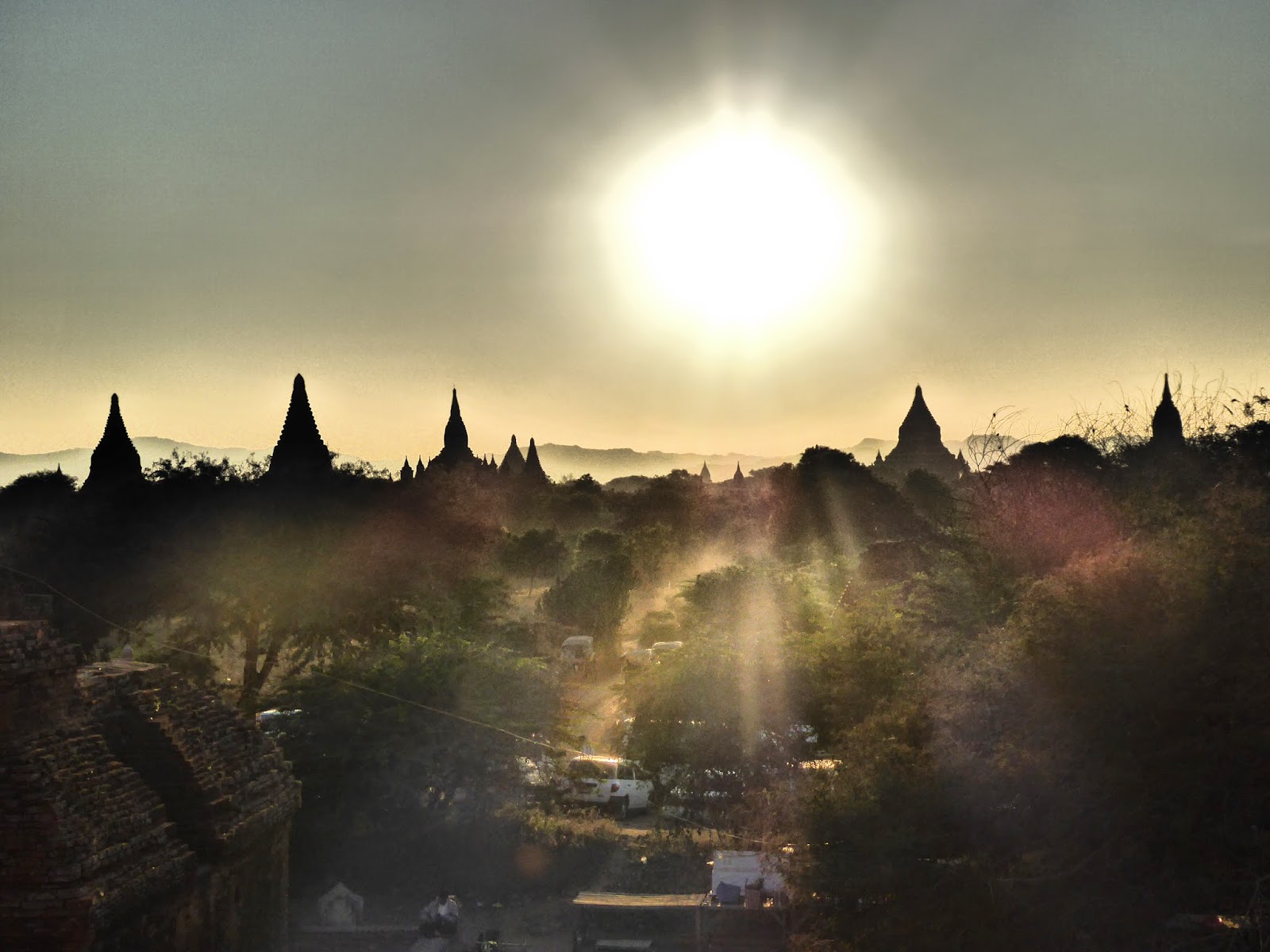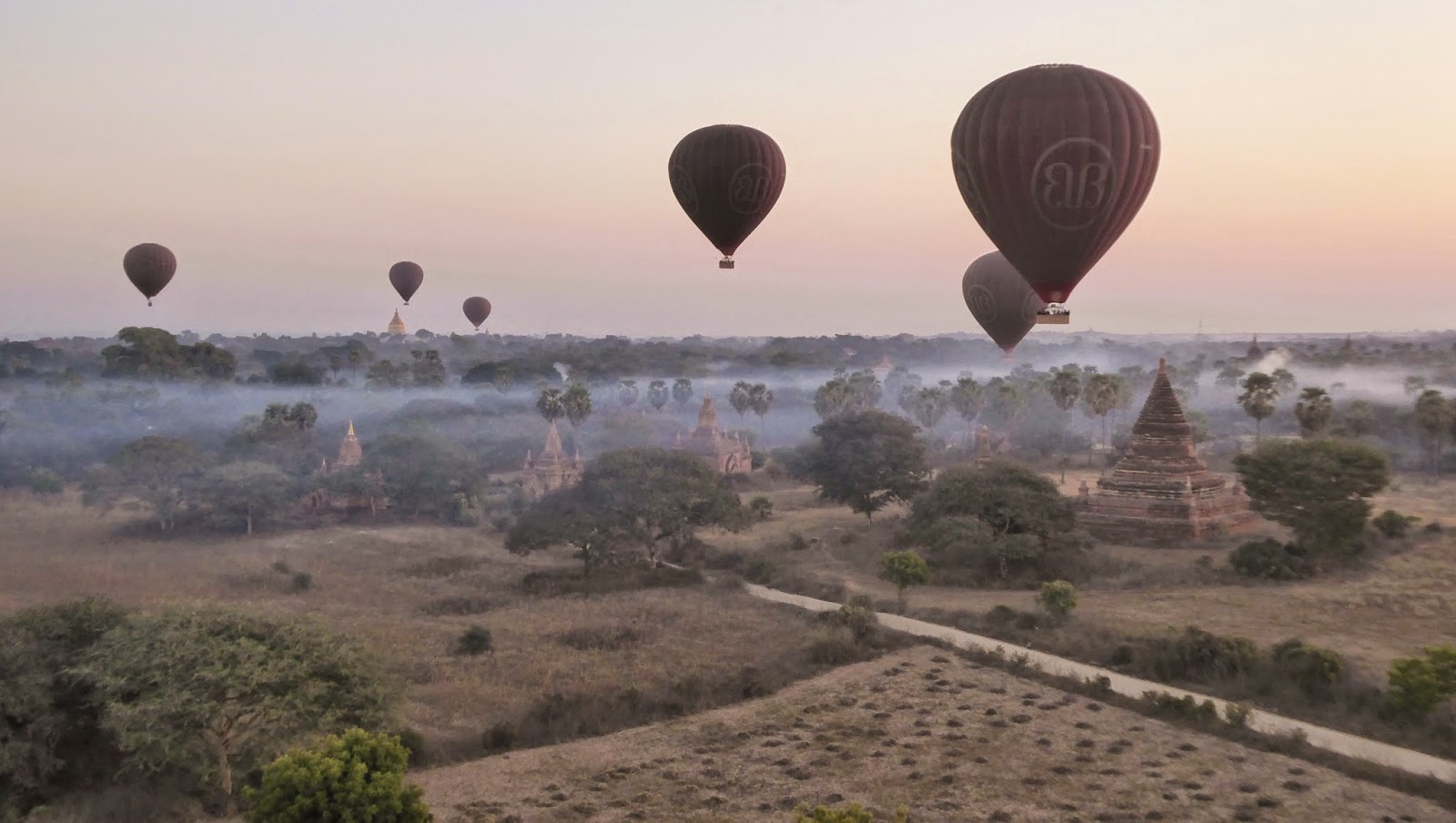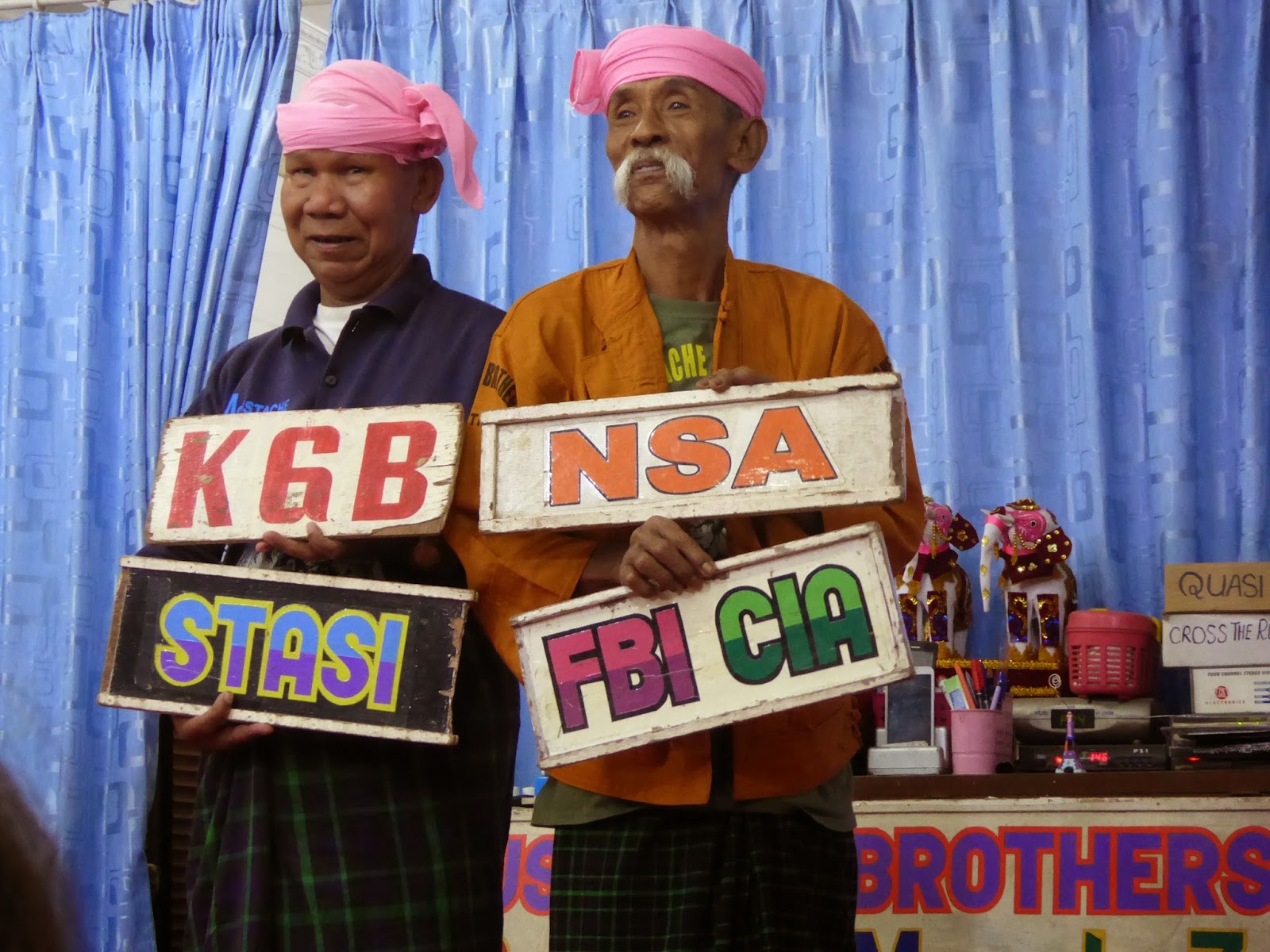 We were staying just outside of Old Bagan in the very backpacker friendly area of Nyaung-U, with some great places to eat western style food instead of rice or noodles; we liked both Wetherspoons (not the pub chain) for its burgers and Black Bamboo. Because of that, before we started hitting just a select few of the numerous temples, our first stop of the day was the local market. One of our fellow passengers used to be a professional buyer, so he had fun haggling with the stall holders.
We were staying just outside of Old Bagan in the very backpacker friendly area of Nyaung-U, with some great places to eat western style food instead of rice or noodles; we liked both Wetherspoons (not the pub chain) for its burgers and Black Bamboo. Because of that, before we started hitting just a select few of the numerous temples, our first stop of the day was the local market. One of our fellow passengers used to be a professional buyer, so he had fun haggling with the stall holders.Our next stop was, unsurprisingly, a temple. And rather an impressive one too. The Shwe-zi-gon Pagoda is unusual for me in that it is a gilded temple that I actually thought looked rather good. I liked the floral decorations, which were a bit different to the norm.
 I know that we are all keen to get nice photos of people, and that the monks here make a particularly colourful photo, but I always feel a little uncomfortable if taking the photo becomes intrusive or seems to be influencing the person's behaviour. This picture of everyone photographing the young monk, who as a result spent ages posing for them, is the sort of thing I generally try to avoid.
I know that we are all keen to get nice photos of people, and that the monks here make a particularly colourful photo, but I always feel a little uncomfortable if taking the photo becomes intrusive or seems to be influencing the person's behaviour. This picture of everyone photographing the young monk, who as a result spent ages posing for them, is the sort of thing I generally try to avoid.
This temple also had a lot of small stone carved panels around the outside, telling stories from Bhudda's lives. Myo told us a couple, but strangely the one that sticks in the mind was the one about the jackal eating the elephant.
The story goes that the hungry jackal found an elephant carcass, but found it too tough and unpleasant to eat until it got to the anus, which was softer. He chewed his way through the anus, into the elephant's stomach, where he started eating the insides. Figuring the carcass could be both shelter and food, the jackal decided to stay inside, but when the sun came out it dried out the hide, causing the hole he had made to close up, and with him being bigger from having eaten so much, he was trapped inside. Only the morning dew the next day saved him, by softening the hide enough for him to escape. But in doing so he lost all of his hair. The close call made the jackal realise he must never be so greedy again, which is the moral of the story.
 Our second stop was a lacquer work place, where we saw them splitting the bamboo whilst holding it between their toes, using that bamboo to make the form of the object, and then applying the sticky black thayo, or lacquer, by hand. The lacquer is made by mixing sap from the Thit-si tree with ash, and they apply at least seven layers, each time having to let it dry for about a week and sandpapering it to make sure it is perfectly smooth.
Our second stop was a lacquer work place, where we saw them splitting the bamboo whilst holding it between their toes, using that bamboo to make the form of the object, and then applying the sticky black thayo, or lacquer, by hand. The lacquer is made by mixing sap from the Thit-si tree with ash, and they apply at least seven layers, each time having to let it dry for about a week and sandpapering it to make sure it is perfectly smooth.Once enough layers are added, the hand engrave the pattern and apply the colour or gold decoration. As ever with these crafts, they may be more expensive to buy than you first expected, but once you see the intricate, skilled and lengthy process required to make an item, you can much better appreciate why.
 Our next stop was the U-pali-thein temple, which was didn't look especially promising from the outside, but has some beautiful, if a bit faded, murals inside. Sadly, no photographs were allowed.
Our next stop was the U-pali-thein temple, which was didn't look especially promising from the outside, but has some beautiful, if a bit faded, murals inside. Sadly, no photographs were allowed.Our next temple, Hit-lo-min-lo also had some murals inside but not nearly as impressive, but the outside was good.
 I don't know the name of the next set of pagoda that we stopped at, they were around the Min Myaw Yaza area, but they were a very picturesque group of the old stone type that I like so much, with the added benefit of some brightly coloured bougainvilleas to liven up the view.
I don't know the name of the next set of pagoda that we stopped at, they were around the Min Myaw Yaza area, but they were a very picturesque group of the old stone type that I like so much, with the added benefit of some brightly coloured bougainvilleas to liven up the view.By this time we had earned some lunch, which we had at The Moon - Be Kind to Animals, an excellent vegetarian restaurant where I had some really good tempura. This one is recommended by lonely planet, which the one across the street, also calling itself Be Kind To Animals, seems to be hoping to cash in on. That one may be good too, but I can vouch for only the first one.

Refreshed, we headed for the Ananda Temple. It is supposed to be a very good site, with well regarded, artworks inside, but I didn't like it much. It looked a bit austere to me.
 The That-byin-nyu temple was another that didn't allow inside photos. It is the tallest of the temples here at just over 200 feet.
The That-byin-nyu temple was another that didn't allow inside photos. It is the tallest of the temples here at just over 200 feet. Our next stop was the pairing of the Gu Byauk Gyi and Mya Zedi temples, two quite different looking temples that had some lovely stone work. However by this time I have to say I was flagging a bit. It is well worth getting around the temples in Bagan, but on a hot day it can get pretty tiring.
Our next stop was the pairing of the Gu Byauk Gyi and Mya Zedi temples, two quite different looking temples that had some lovely stone work. However by this time I have to say I was flagging a bit. It is well worth getting around the temples in Bagan, but on a hot day it can get pretty tiring.This was a good spot for a quick group photo, with Xara having a nice place to park in front of the range of temples.

Our next stop was a bit of a rush as we had a sunset deadline. Dhamma Yan Dyi pagoda is another big one and, as it is apparently not so exciting on the inside, we just took a look around, and left the inside to the horde of Chinese tourists all wearing their bright green tour group hats. That seems to be a common approach for Chinese tour groups, having a hat or t-shirt that they all wear.
 This is a strange photo to add I know, but I quite liked all of the footprints in the sand. Shoes and socks have to be taken off to go into the temple or other religious areas, so people are often barefoot.
This is a strange photo to add I know, but I quite liked all of the footprints in the sand. Shoes and socks have to be taken off to go into the temple or other religious areas, so people are often barefoot. Our final stop was at the Shwe San Daw pagoda, which we clambered up - so of us not so high as others - to watch the sunset over the spires of the various temples and stupas.
Our final stop was at the Shwe San Daw pagoda, which we clambered up - so of us not so high as others - to watch the sunset over the spires of the various temples and stupas.















































